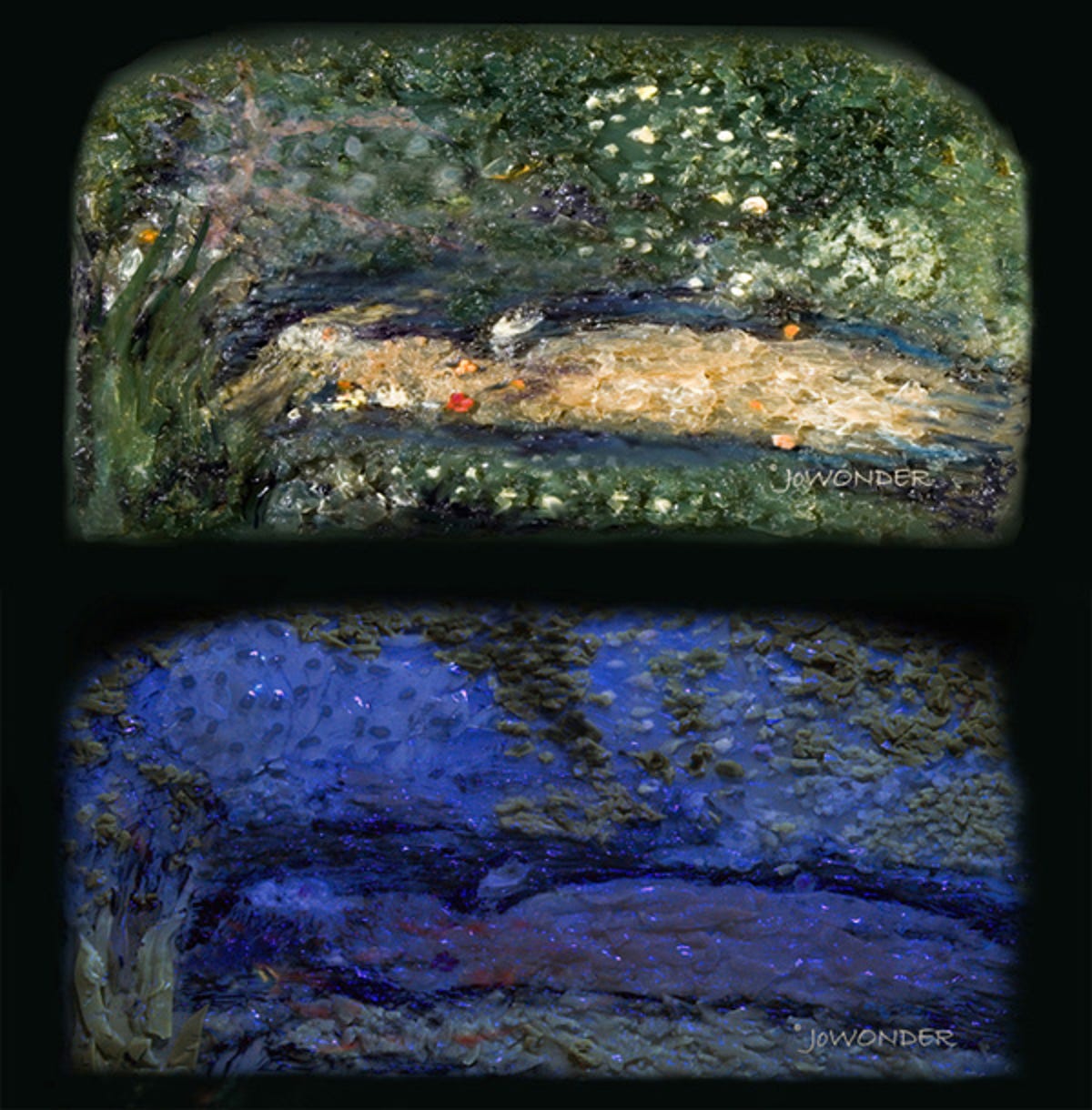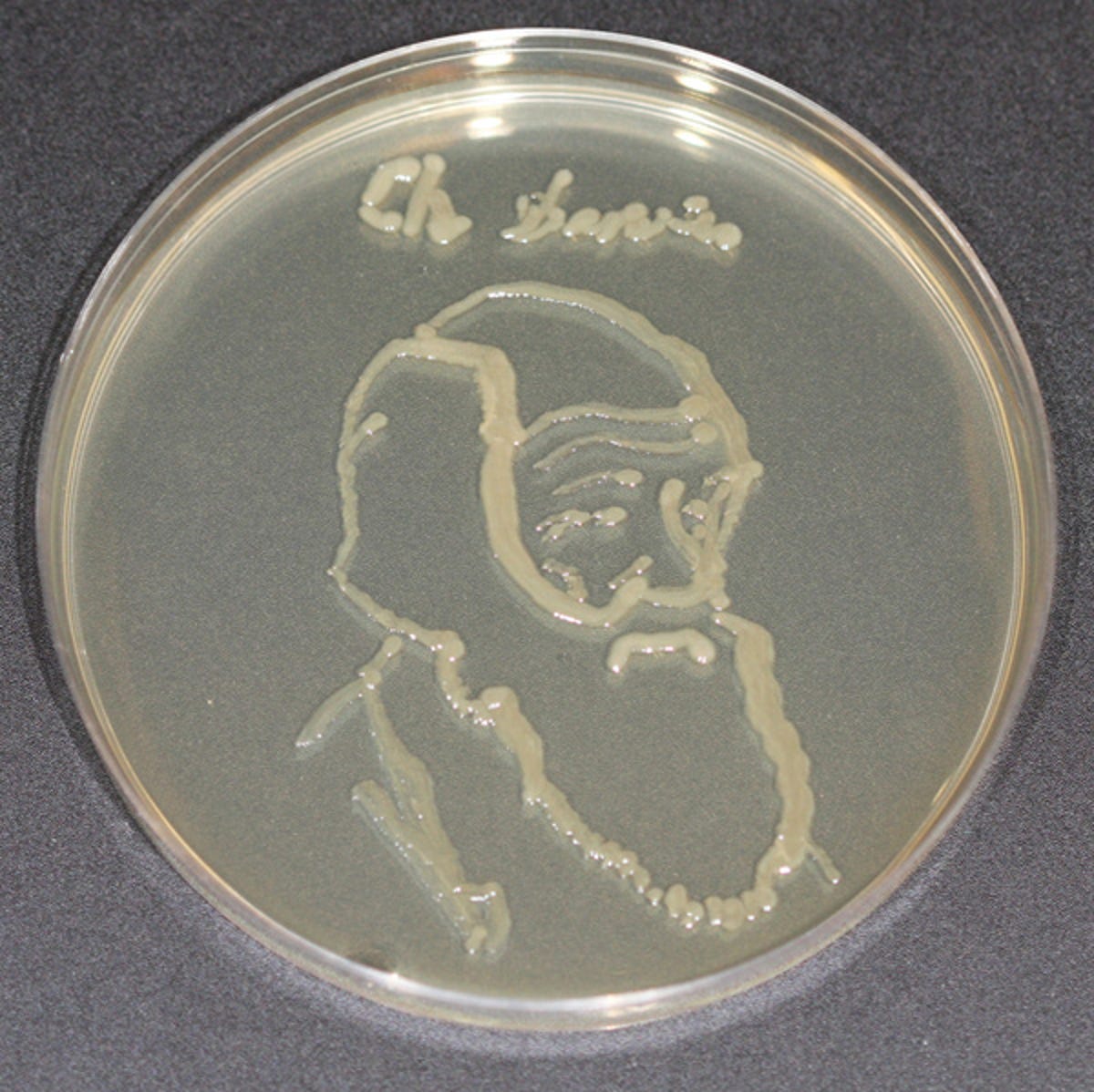The art of germs
Artists have used some pretty strange materials over the years — but we don't think it gets much stranger than bacteria.

6 Days Goodbye Poems of Ophelia
Artists have used some pretty strange materials over the years — but we don't think it gets much stranger than bacteria.
The first person to start making art out of germs was the father of penicillin himself, Alexander Fleming, who scratched out images in Petri dishes. That method is still employed today, but, increasingly, artists and microbiologists are exploring the microscopic world of bacteria in ever more exciting ways.
JoWonder, 2009
Modelled after the 1852 painting Ophelia by Pre-Raphaelite artist John Everett Millais, this tiny re-creation by British artist JoWonder is painted in bacteria. The work shows a time lapse as the bacteria grew over the painting, over which voices paid tribute to Ophelia by way of poems, songs and messages delivered to the artist via voicemail. The video below shows day four; the image above shows days one and three.
JoWonder said of the work:
I wanted to paint an Ophelia who finds her true self while drowning in a place between life and death. I've always been fascinated by the idea of death and dying. Chromobacterium violaceum, a bacterium that inhibits the growth of other bacteria, was used like the black lines in a colouring book to shape the painting. Bacillus mycoides was used to depict Ophelia's soul and breath in the animated painting.
Apple Tree
Dr Niall Hamilton
This three-dimensional apple tree was painted in fungus: Scopulariopsis brevicaulis, candida sake and Cladosporium herbarum.

Charles Darwin
Joao Lima, John Wilson, Paola Pierossi, Nick Jeffery and Tyler Elliott
Scientists with a sense of humour! We'd be willing to bet that Charles Darwin never expected his portrait to be rendered in E. coli on agar.
Bacterial art
Professor Eshel Ben-Jacob
If you have never heard of Eshel Ben-Jacob, you should go read about him. He's a pretty big deal in microbiology and physics, and he's made some important contributions to various scientific disciplines. He also has an artistic soul, as is evidenced by his colourisations of microscopic bacterial growth patterns in Petri dishes. Each image shows a colony of billions of microorganisms that have evolved in response to various stresses, such as antibacterial hand gel.
You can see more of his work on his Facebook page.
Her own DNA
Hunter Cole
Dr Hunter Cole draws abstract pieces in bioluminescent bacteria growing from DNA — what she calls a "living drawing". As the bacteria dies, the light fades; a process documented in the video below, set to a piece of music based on the protein sequence found in the bacteria.
BioMario
iGEM Team Osaka
As part of the annual International Genetically Engineered Machines (iGEM) competition, the team from Osaka University created a way of colouring bacteria using fluorescent proteins and organic pigments. The system is called "colacoli", and was used to create the glowing Mario above. You can read more about their methods and research here.

BioMario, animated.
(Credit: Osaka University)
Endless Forms Most Beautiful
Susan Boafo, 2009
Susan Boafo creates gorgeous organic photographs by laying a photographic negative over aquatic algae spores. As the algae grows, it moves toward the light, bringing the negative into a short-lived existence as a photograph made entirely from living organisms.
Island Sunset
Dr Roger Tsien
Dr Roger Tsien was one of the researchers responsible — and awarded the Nobel Prize — for identifying and developing Green Fluorescent Protein (GFP), a protein that glows when under ultraviolet light. It has been used by researchers in biochemistry and molecular biology to observe processes that were previously difficult to see, such as nerve growth, gene expression, cell division and chromosome replication. The above sunset scene was drawn by Tsien, with several colours of bacteria containing fluorescent proteins.
My Favorite Artists Series: Albert Einstein
Zachery Copfer, 2012
Like Boafo, microbiologist Zachery Copfer creates photographs out of living organisms. He spreads agar in a Petri dish with bacteria, then places a negative over the top and zaps it with ultraviolet rays. The bacteria exposed to the rays die, leaving behind a bacterial photograph. The works are not as transient as Boafo's; after a couple of days, when the image has grown, Copfer preserves it in acrylic and resin. The above image of Albert Einstein was created with Serratia marcescens, a bacteria responsible for human urinary tract and wound infections.
Bacterial Tweet
Simon Park, 2012
Microbiologist and artist Simon Park produces some truly stunning works of bacterial art, exploring the way bacterial microorganisms react to objects and stimuli in the world around us. His work with bioluminescent bacteria is particularly beautiful — and funny. We love the bioluminescent Christmas tree.
The above "tweet" is made entirely out of living bacteria, and is absolutely worth viewing in high res. Park made the first-ever bacterial tweet earlier this month, the text of which reads:
Hello! We are the dark matter of the biological world. Let it be noted that without the unacknowledged legislation of microbes, inside and outside of you, there is no you
Expanded Self
Sonja Bäumel, 2012
Using a giant Petri dish spread with agar as her canvas, German artist Sonja Bäumel has found a way of showing our "invisible skin": the bacteria that coat us. Assisted by bacteriologist Erich Schopf, she laid her own body in an agar-filled Petri dish measuring 210x80 centimetres. Within a few days, the imprint of her body could be seen in living, growing bacteria on the surface of the agar.

